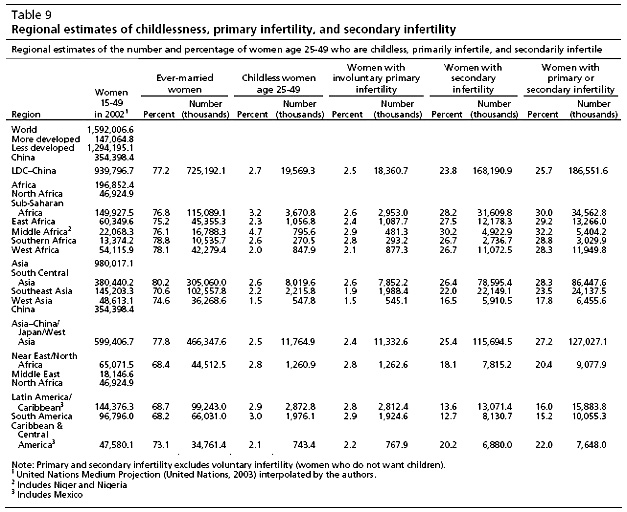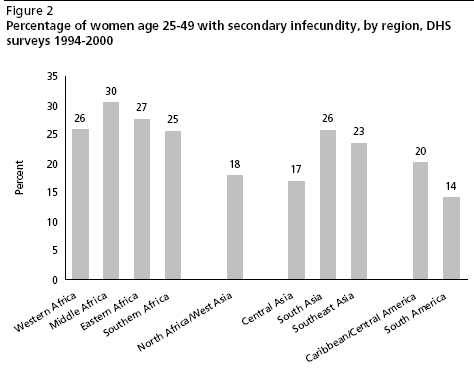Infertility and spontaneous abortion
Definitions
Childlessness: Percentage of women who are currently
married, have been so for at least five years, and who have no living
children.
Primary infertility: Percentage of women who have been
married for the past five years, who have ever had sexual intercourse,
who have not used contraception during the past five years, and who have
not had any births.
Secondary infertility: Percentage of women with no
births in the past five years but who have had a birth at some time,
among women who have been married for the past five years and did not
use contraception during that period.
Secondary infecundity: Percentage of women with no
births and no pregnancies in the past five years but who have had a
birth or pregnancy at some time, among women who have been married for
the past five years but did not use contraception during that period.
This study utilizes data from 47 Demographic and Health Surveys in developing countries to examine levels, trends, and differentials in women’s inability to bear children. Overall, by age 45 to 49, only 3 percent of sexually experienced women have not had a birth. Countries with more than 5 percent of sexually experienced women age 45 to 49 without a birth include the Central African Republic, Cameroon, Mozambique, Niger, Haiti, Colombia, and Brazil.

Middle and Eastern Africa have the highest average levels of secondary infecundity. These subregions are followed by Western Africa, Southern Africa, and South Asia, which have similar levels. The lowest levels of secondary infecundity are in South America.

Rutstein, Shea O. and Iqbal H. Shah. 2004. Infecundity, Infertility, and Childlessness in Developing Countries. DHS Comparative Reports No. 9. Calverton, Maryland, USA: ORC Macro and the World Health Organization. Available from: http://www.measuredhs.com/pubs/pdf/CR9/CR9.pdf